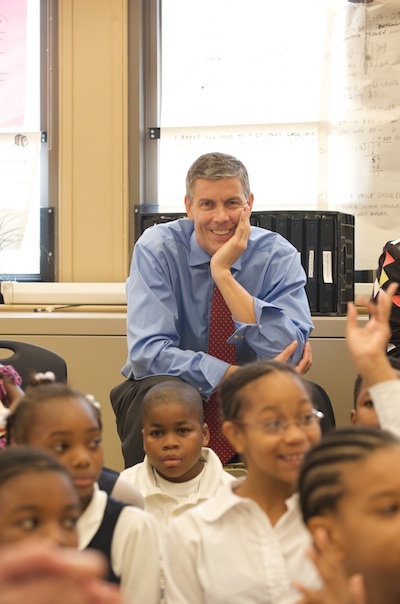As No Child Left Behind is left behind and Common Core Standards make their way in to US educational policy, global learning has become the hot topic of educational dialogue. The big question is ‘how will our nation’s children fare in the ever diversifying, ever globalizing world?’ It is becoming more and more obvious that the problems our younger generations are going to have to solve will be global problems, whether it pertains to the economy, demographic shifts or the environment. Many believe that the way to prepare our students to take on these challenges is through global learning.
To me, global learning is learning that creates and enhances 1) student awareness of different cultures, globalization and its impacts and 2) the ability to interact effectively in an increasingly global world; that is, global learning is learning to be a better global citizen. Yong Zhao notes that these global “citizens must be able to competently negotiate cultural differences, manage multiple identities, comfortably interact with people from different cultures, and confidently move across cultures as well as the virtual and physical worlds” (“Education in the Flat World: Implications of Globalization on Education”, EDge vol 2, no 4). To master these skills, students must become more aware, more tolerant and more appreciative of cultures other than their own. As other countries move toward preparing their students to speak multiple languages, travel across national borders, be more emotionally stable and promote creativity and individuality, the US needs to move in the same direction. Zhao notes that much of what motivates US movements toward a more global education is worry about international competition. If the US wishes to compete with other countries, then it should consider the competing training methods and move to improve upon them in creating its own standards.
What the recent US standards of education point to is that those concerned with how our students perform in international competition are short term strategists. While they seem to be economically motivated – what will keep the US ahead in the sciences, maths and technologies so that we can keep an economic stronghold on innovation? – their vision is short-sighted. No Child Left Behind focused on high stakes testing at the elementary, middle and high school levels. Unfortunately, none of these demographics are particularly money-earning, money-spending or money-creating. Are those test scores really indicators of how much these students will contribute to that demographic in adulthood? I think not. US educational policy makers must come to the understanding that the long term success of the US in innovation was not achieved by those with high test scores (Einstein reputedly did not score well in math, but without his innovative ideas, where would our understanding of physics be?), but by those with the creativity and interest to pursue problems to the end. These are the money-creators (those that create the ideas/businesses that increase profit, jobs on the market, jumps in technology, paradigm shifts, etc). These are the people that change the times, rather than changing with the times. Right now, these people are expanding their ideas and businesses into the growing global community, aware that it is already the frontier to be on. This is the community in which our current students will have to live and work.
US Secretary of Education, Arne Duncan commented in May 2010 about international engagement and collaboration through education, but still seemed stuck in Cold War terms: he compares investing in education as “our generation’s ‘moonshot’.” He goes on to say that “like the space race, it involves a healthy rivalry with other advanced nations.” It seems strange enough to call Cold War competition “healthy rivalry”, but to compare this to the developing education program of engagement and collaboration is flat out counter-intuitive. While I believe that “healthy” competition can add urgency and interest into the system, it is better to avoid Cold War terminology that could easily move the dialogue to memories of cultural superiority and paternalism, which undermine international cooperation and collaboration. Despite this awkward diction put forth, Secretary Duncan did heavily stress the movement of education to prepare students for building international relationships and fluency in other languages to support future international and collaborative ventures.
With these goals of international collaboration and cooperation in mind, what must global learning become to achieve those goals? The most obvious global learning facets – awareness, tolerance and appreciation of different cultures – tend to come to mind, but for students to succeed in increasingly diverse communities, the ability to interact with internationals and those with cultural differences will be equally important. Two of the major skill sets involved in that ability are multilingual and cultural fluency. One can speak a language, but without the cultural fluency to be able to interact with native speakers of that language, it will be hard to grasp the full meanings of things such as idioms and body language. Another is skill set understanding how to be a critical and creative thinker in unfamiliar or collaborative environments. Without these interactive components of global learning, international collaboration and cooperation would be impossible.
What is your definition of global learning? How do you think students need to be prepared for an increasingly globalized world? Leave a comment!
This entry was also posted at Global Learning Dialogues. Please visit for more entries on Global Learning. This post is also being submitted to YeahWrite, so please go vote later this week!



No comments:
Post a Comment
Tell me what you think!